Indoor hanging plants are an excellent way to add natural beauty to your home while maximizing vertical space. They create visual interest, purify the air, and bring a touch of the outdoors inside. Here’s a comprehensive guide to the 15 best hanging plants for indoor environments.
1. Pothos (Epipremnum aureum)
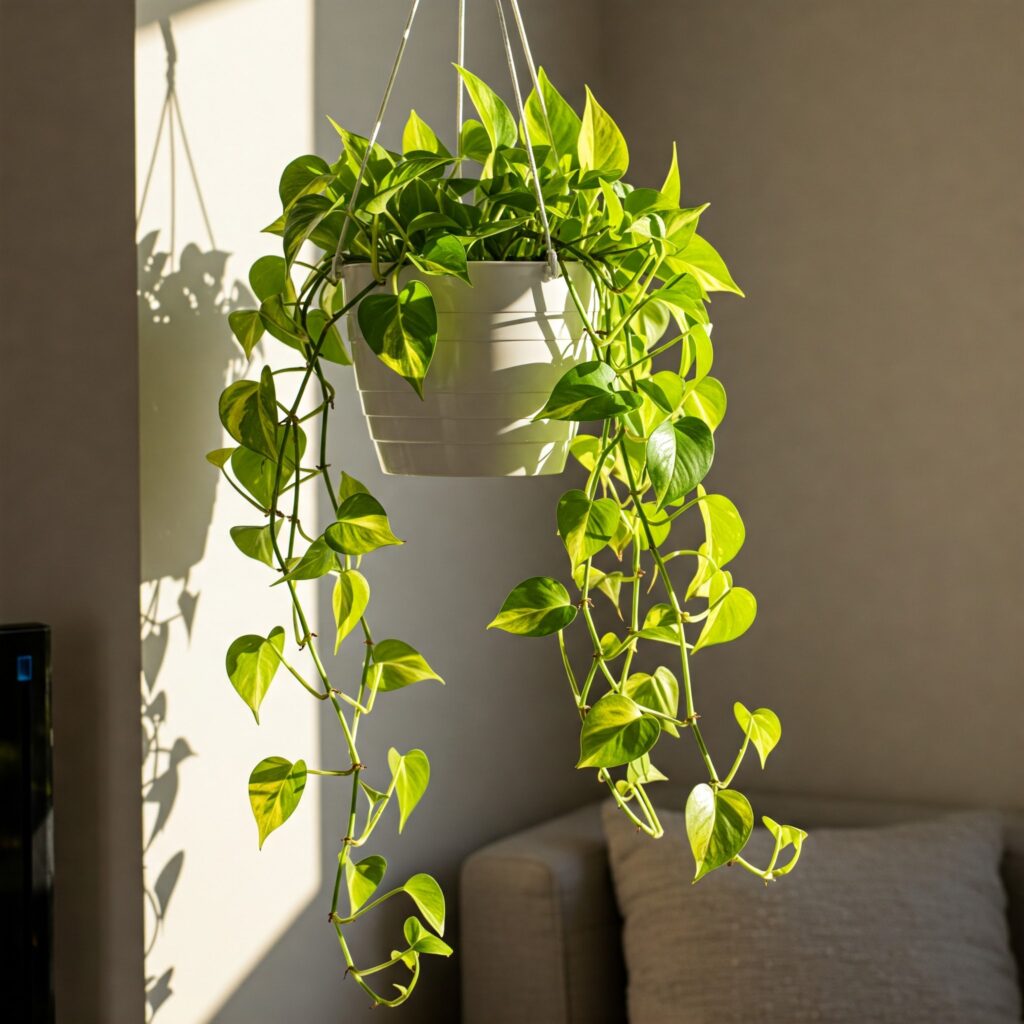
Pothos is perhaps the most popular hanging plant due to its incredible ease of care and versatility. Its heart-shaped leaves cascade beautifully from hanging baskets, and it comes in several varieties including golden, marble queen, neon, and jade. Pothos thrives in medium to low light and only needs watering when the soil feels dry.
2. Spider Plant (Chlorophytum comosum)
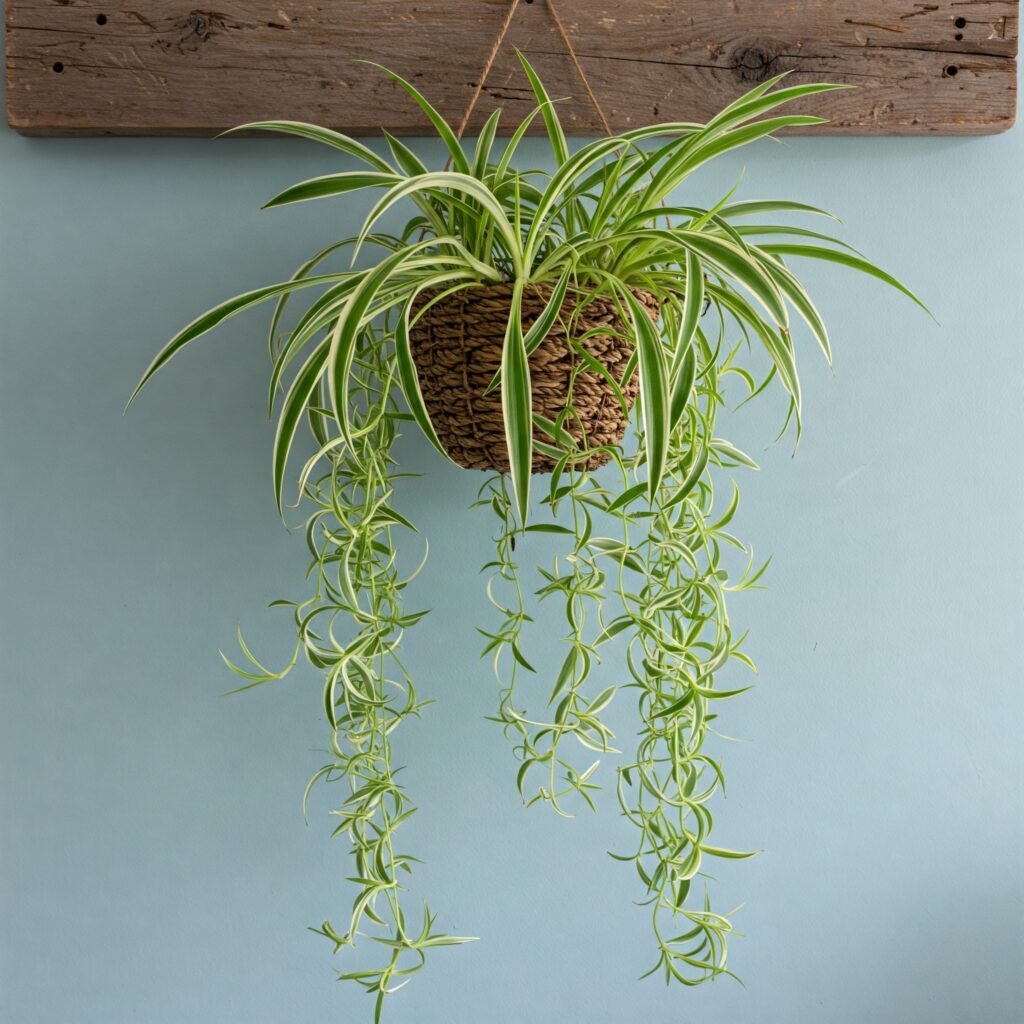
Known for its arching, variegated foliage and tiny “spiderettes” that dangle from the mother plant, spider plants are incredibly forgiving. They prefer bright, indirect light but tolerate lower light conditions and occasional dry soil, making them ideal for beginners.
3. String of Pearls (Senecio rowleyanus)
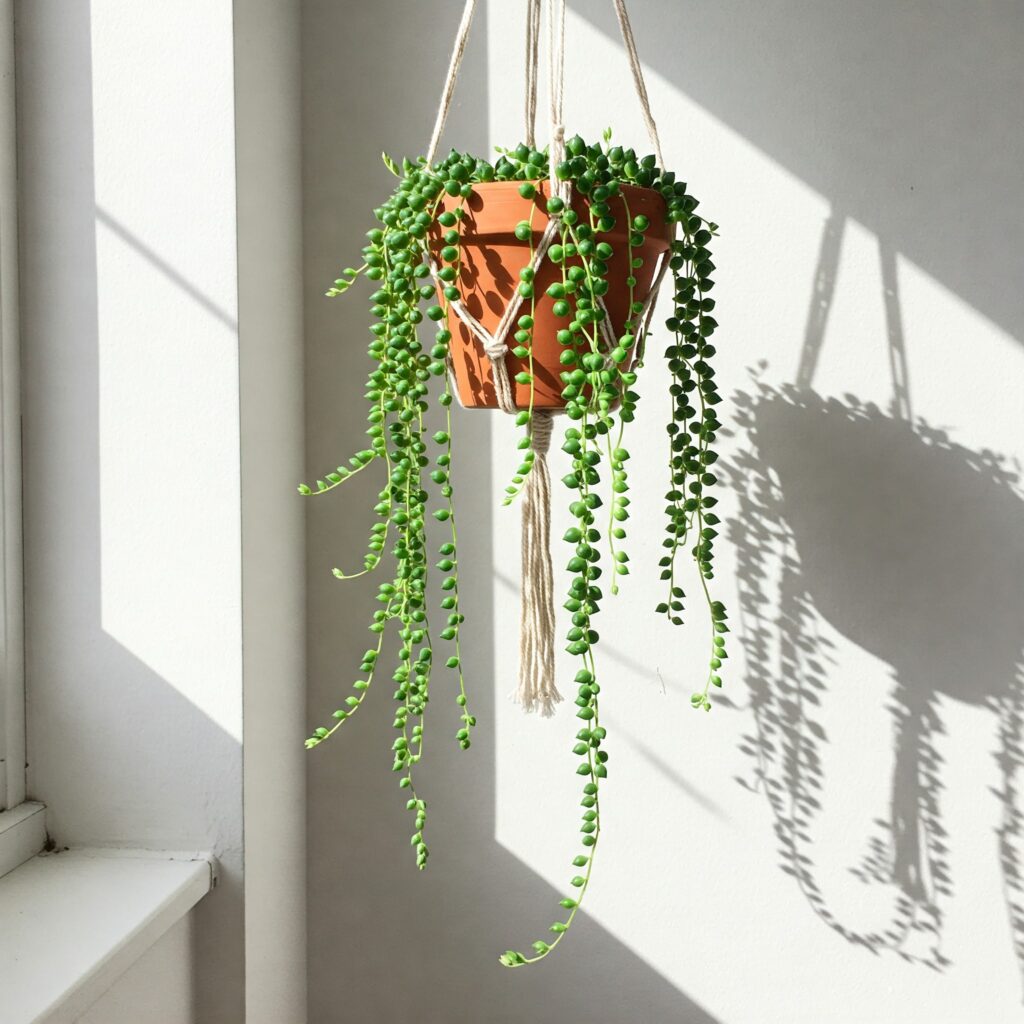
This succulent features distinctive pea-shaped leaves that grow along thin, trailing stems. The unique appearance makes it a conversation starter in any room. String of pearls requires bright light and infrequent watering, making it perfect for those who might forget to water regularly.
4. Philodendron
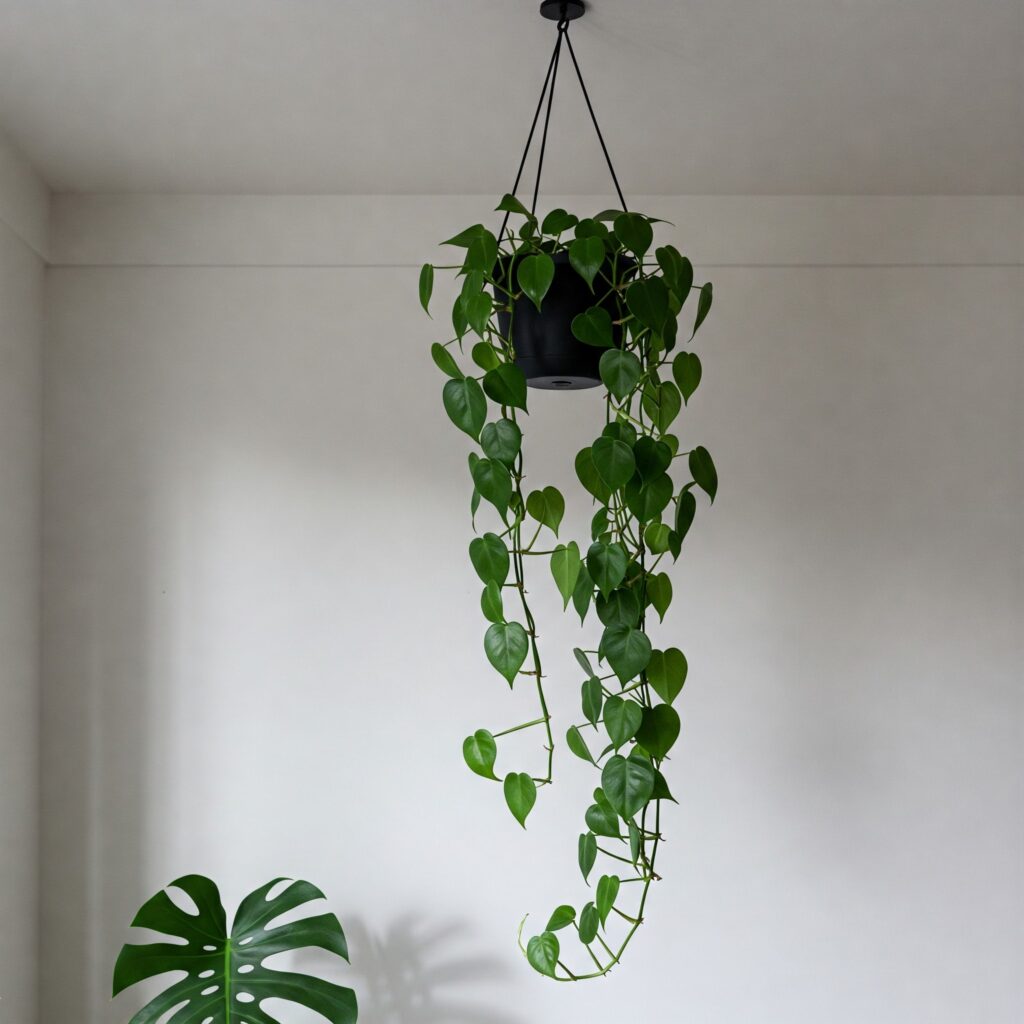
Several philodendron varieties make excellent hanging plants, particularly the heartleaf philodendron (Philodendron hederaceum) with its glossy, heart-shaped leaves. These plants are adaptable to various light conditions and only need watering when the top inch of soil feels dry.
5. Boston Fern (Nephrolepis exaltata)
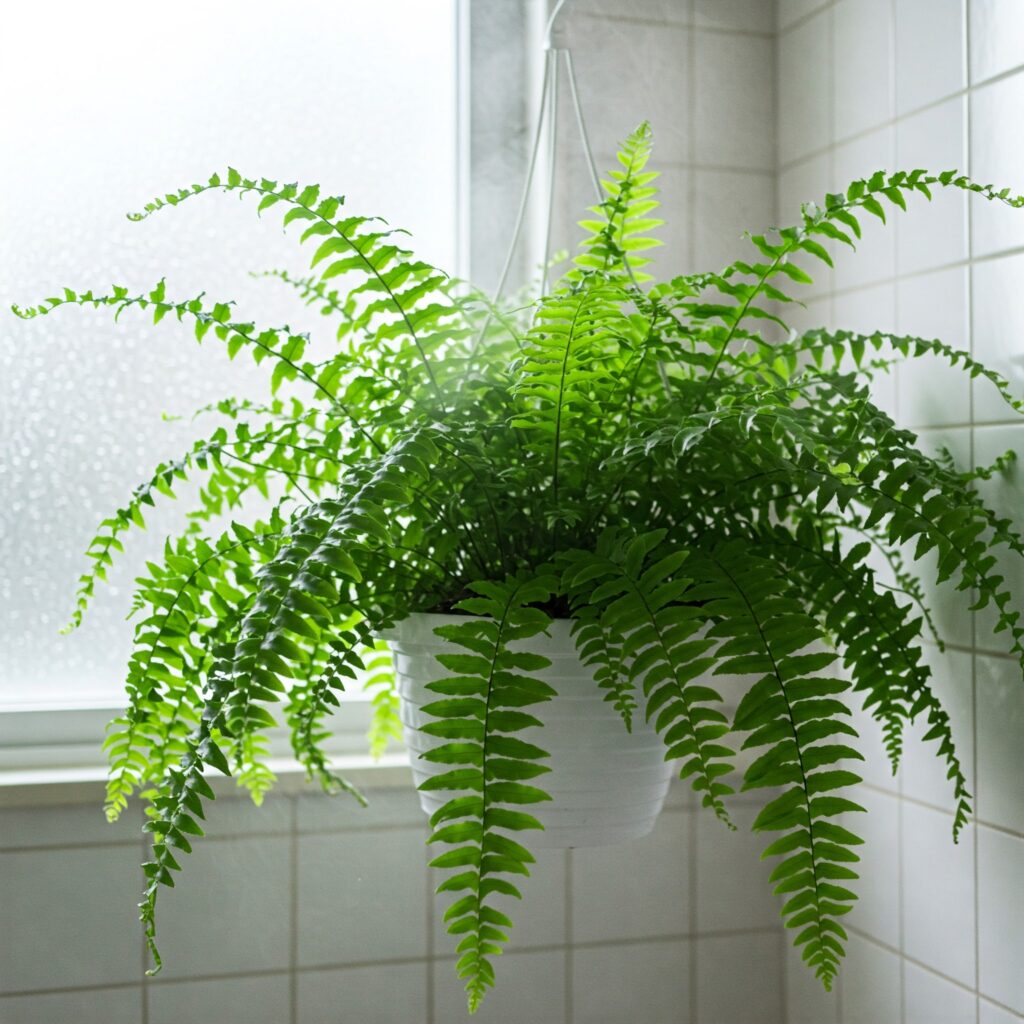
With its feathery, arching fronds, the Boston fern adds a lush, tropical feel to any space. Unlike many other hanging plants, it prefers consistent moisture and humidity, making it ideal for bathrooms or kitchens.
6. English Ivy (Hedera helix)
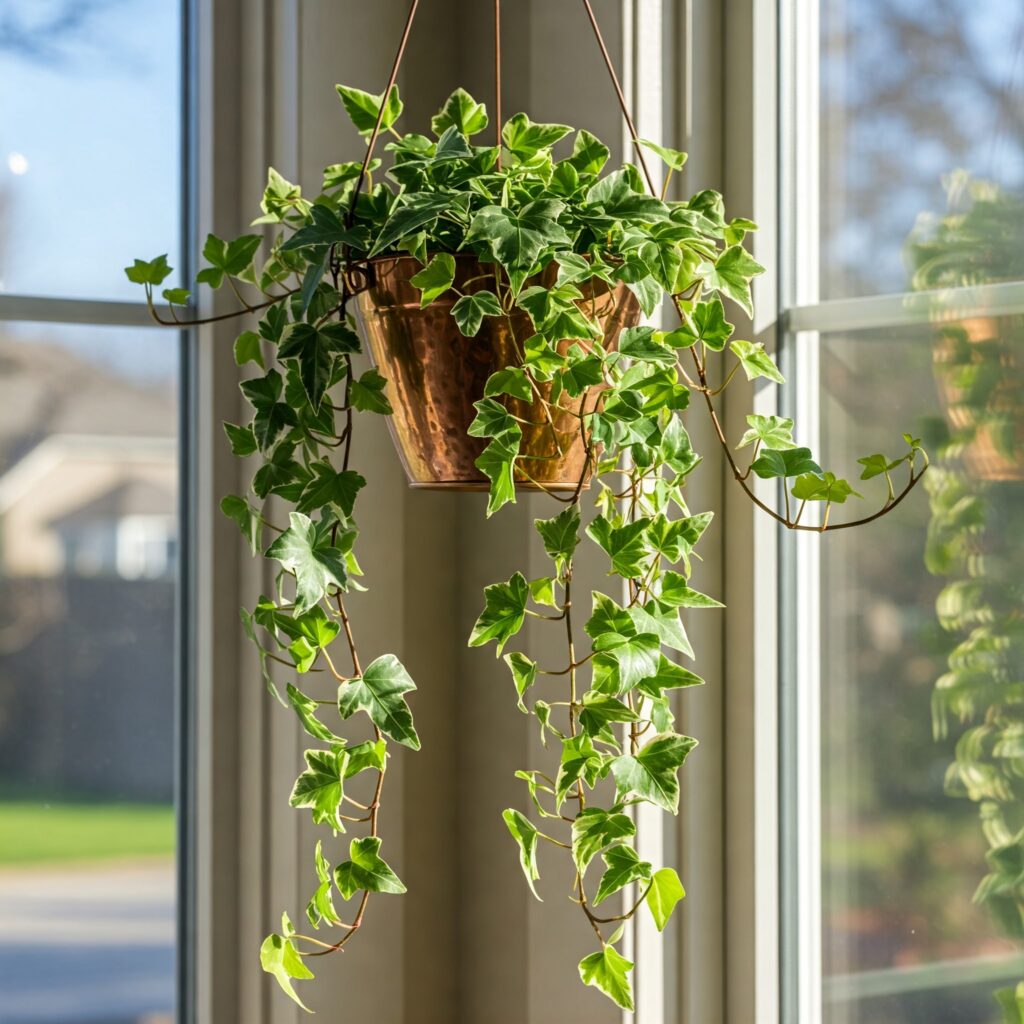
This classic trailing plant features elegant, pointed leaves that can grow several feet long. English ivy prefers bright, indirect light but adapts to lower light conditions. It’s also known for its air-purifying qualities.
7. String of Hearts (Ceropegia woodii)
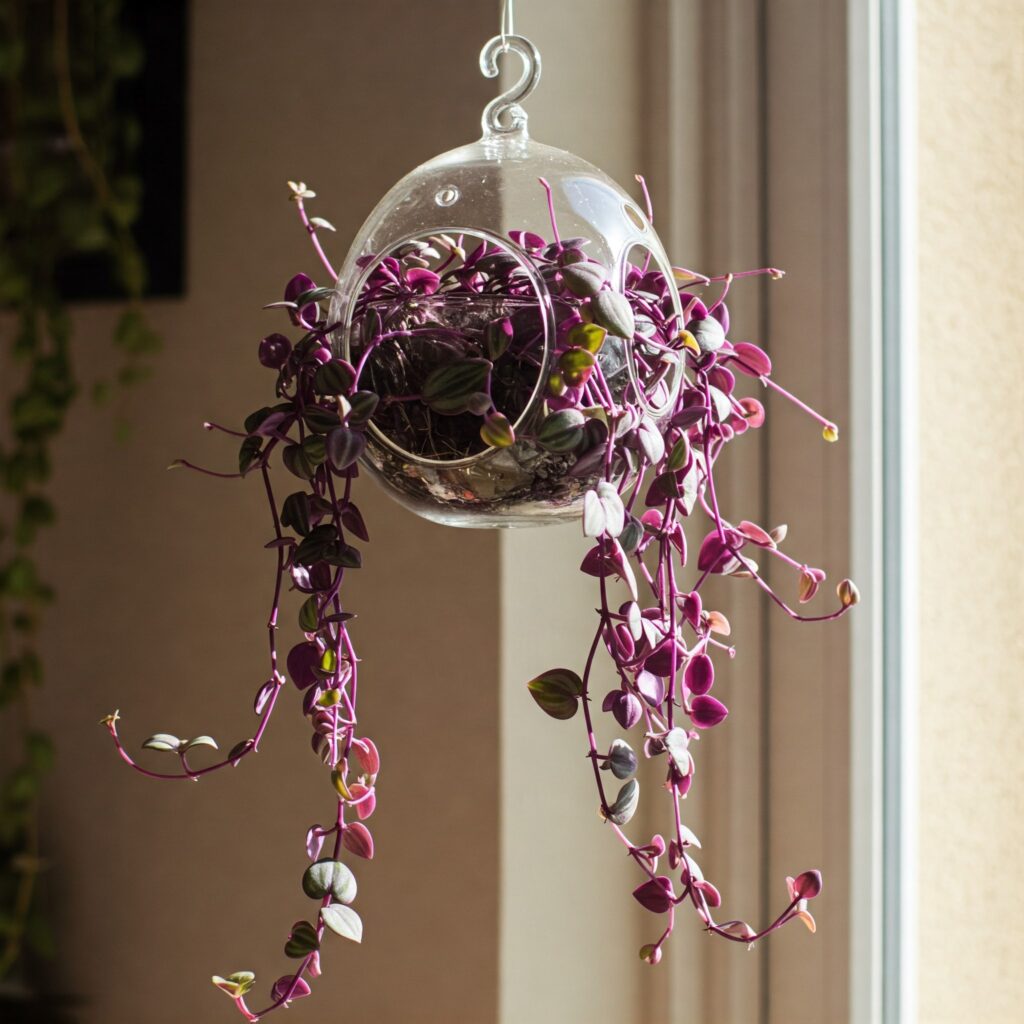
With its delicate, heart-shaped leaves that grow along thin purple stems, this plant adds a touch of romance to any space. It’s drought-tolerant and prefers bright, indirect light, making it suitable for sunny windows.
8. Burro’s Tail (Sedum morganianum)

This succulent has plump, overlapping leaves that resemble a donkey’s tail. The blue-green stems can grow up to 3 feet long, creating a striking display. It thrives in bright light and requires minimal watering.
9. Staghorn Fern (Platycerium)

Unlike traditional hanging plants, staghorn ferns can be mounted on boards or placed in hanging baskets. Their unique antler-shaped fronds create a sculptural element in any space. They prefer bright, indirect light and weekly misting.
10. Trailing Jade (Peperomia rotundifolia)
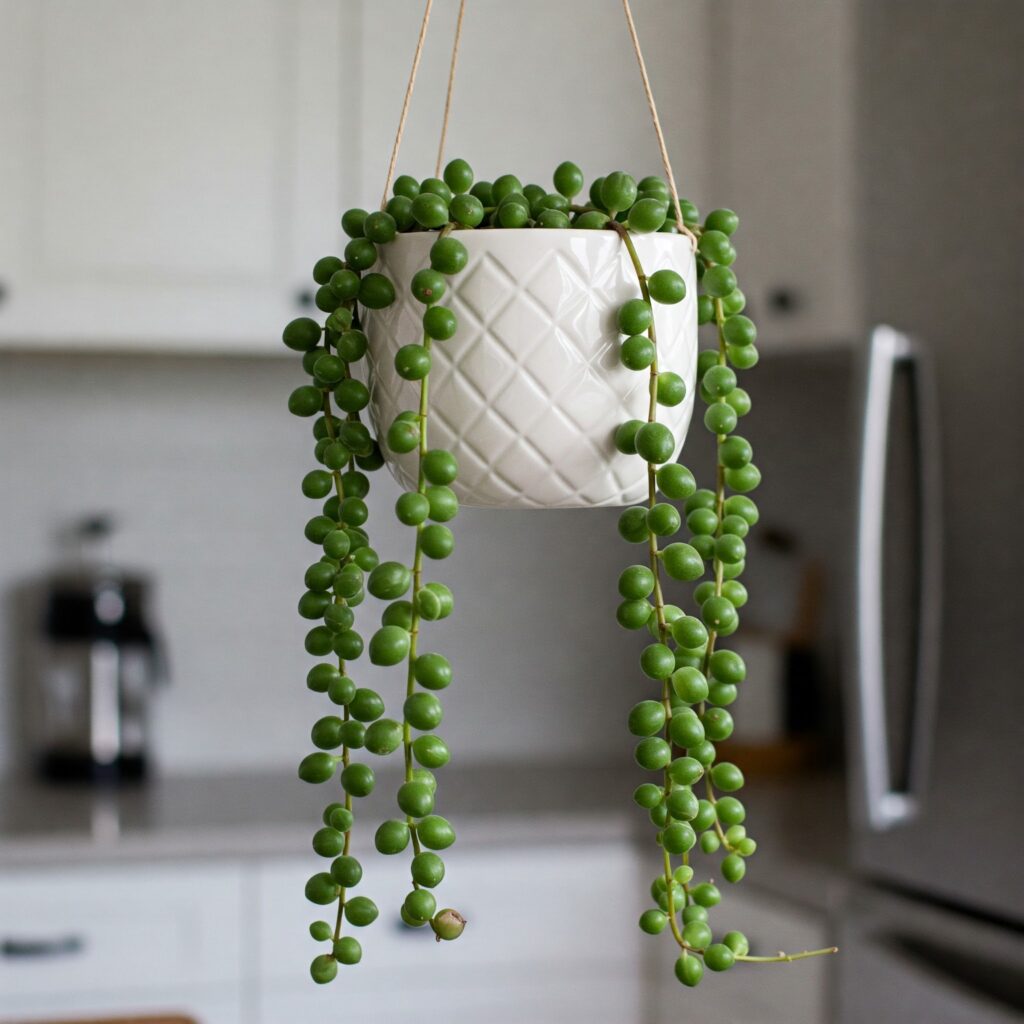
Not to be confused with the common jade plant, trailing jade features small, round leaves on thin stems that cascade beautifully from baskets. It’s relatively low-maintenance, preferring medium light and moderate watering.
11. String of Dolphins (Senecio peregrinus)
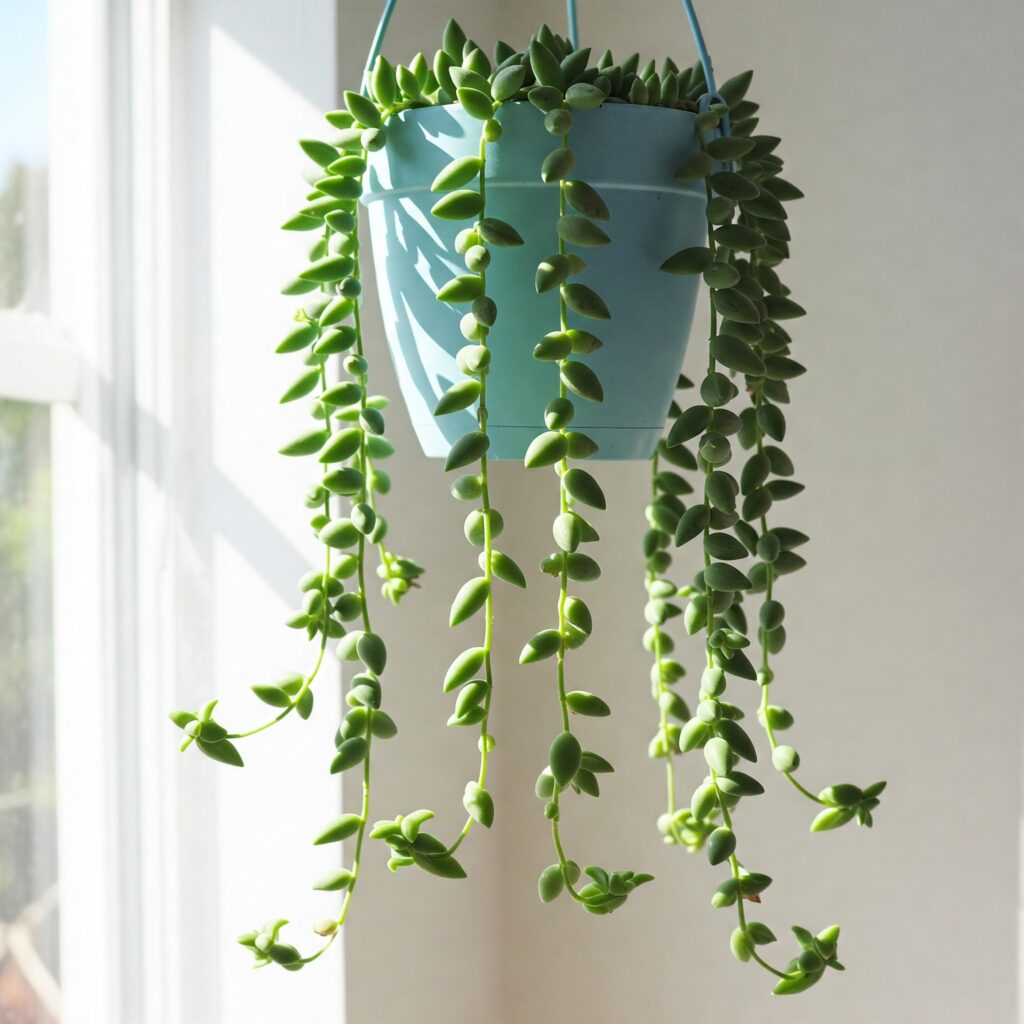
A relative of string of pearls, this whimsical plant has leaves shaped like tiny jumping dolphins. It thrives in bright, indirect light and requires minimal watering, making it perfect for busy plant parents.
12. Lipstick Plant (Aeschynanthus radicans)

Named for its tubular red flowers that resemble lipstick emerging from a tube, this plant features glossy, dark green leaves. It prefers bright, indirect light and consistent moisture during growing seasons.
13. Bird’s Nest Fern (Asplenium nidus)
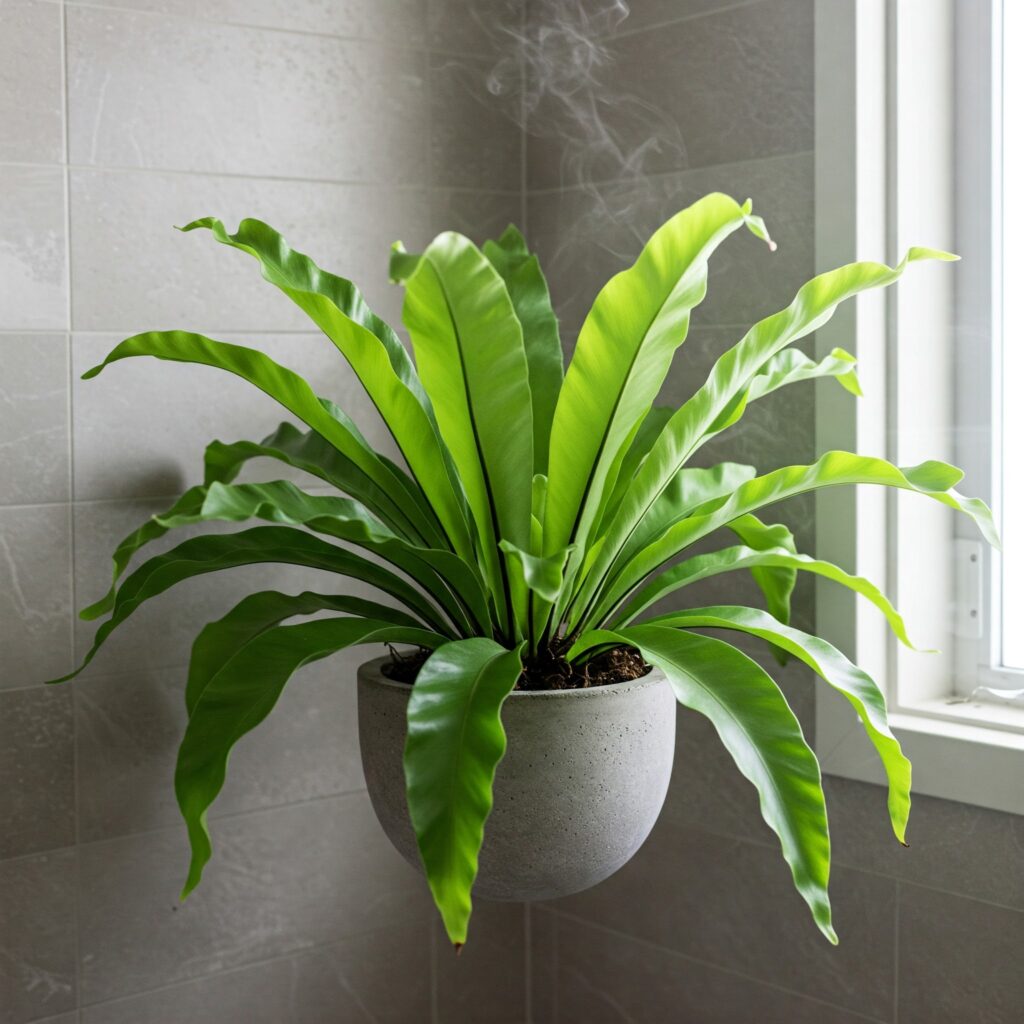
With its wavy, bright green fronds that grow from a central rosette, the bird’s nest fern adds tropical elegance to any space. Unlike some ferns, it’s relatively low-maintenance, preferring medium light and moderate watering.
14. Purple Passion Plant (Gynura aurantiaca)
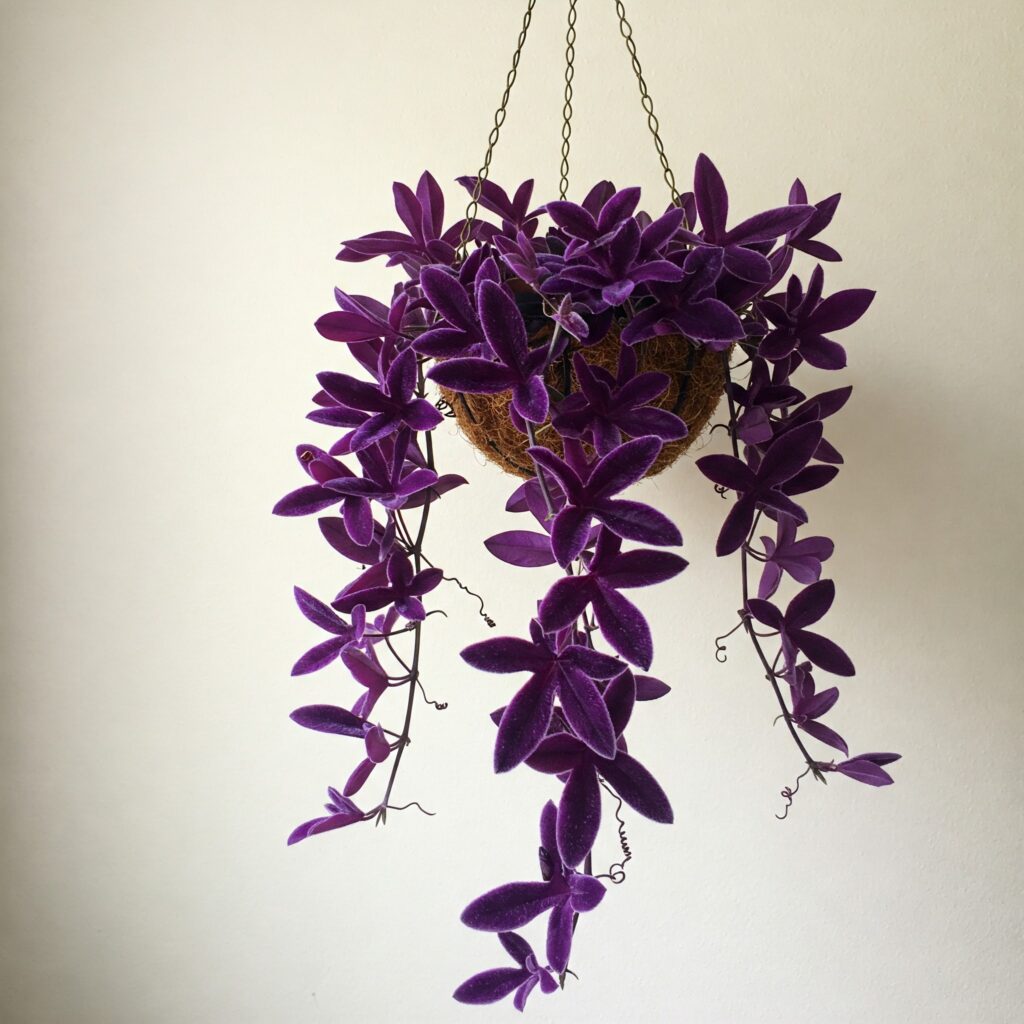
This unique plant features fuzzy, purple-tinted leaves that add distinctive color and texture. When hung, its vines can grow up to 3 feet long. It prefers bright, indirect light and moderate watering.
15. Wax Plant (Hoya carnosa)
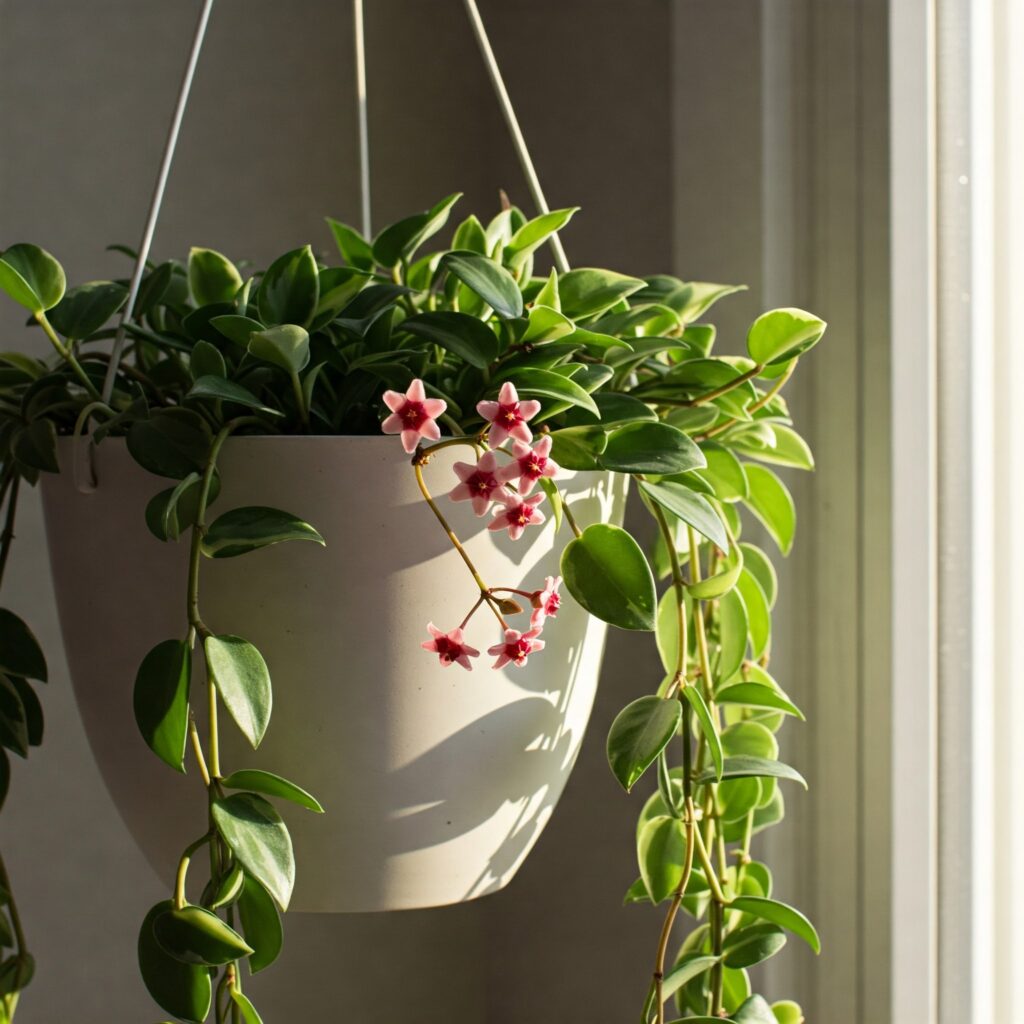
Known for its thick, waxy leaves and sweet-smelling clusters of star-shaped flowers, the wax plant is a slow-growing but rewarding choice. Some varieties have variegated foliage for added visual interest. It prefers bright, indirect light and allows soil to dry between waterings.
Care Tips for Success
- Light: Most hanging plants prefer bright, indirect light but can adapt to medium light conditions. Rotate your plants occasionally for even growth.
- Watering: As a general rule, feel the top inch of soil—if it’s dry, it’s time to water. Most hanging plants prefer to dry out slightly between waterings.
- Humidity: Many hanging plants, especially ferns, appreciate higher humidity. Consider misting them regularly or using a humidifier.
- Fertilizing: Feed your hanging plants with a balanced liquid fertilizer diluted to half-strength every 4-6 weeks during the growing season.
- Pruning: Regular pruning promotes fuller growth and prevents plants from becoming too leggy. Use clean scissors to trim as needed.
By choosing from these versatile hanging plants, you can create a stunning indoor garden that makes the most of your vertical space while bringing natural beauty into your home.

